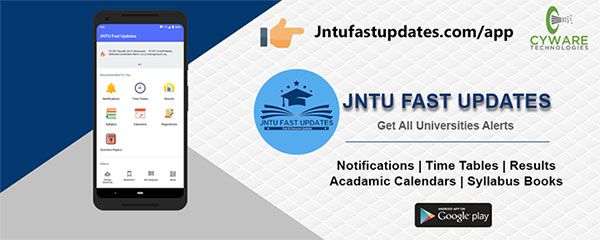JNTUK R16 3-1 DBMS Material/Notes PDF Download
Students those who are studying JNTUK R16 CSE Branch, Can Download Unit wise R16 3-1 Database Management Systems Material/Notes PDFs below.

JNTUK R16 3-1 DBMS Material/Notes PDF Download
OBJECTIVES:
- To learn the principles of systematically designing and using large scale Database Management Systems for various applications.
UNIT-1
An Overview of Database Management, Introduction- What is Database SystemWhat is Database-Why Database- Data Independence- Relation Systems and Others- Summary, Database system architecture, Introduction- The Three Levels of Architecture-The External Level- the Conceptual Level- the Internal Level- Mapping- the Database Administrator-The Database Management Systems- Client/Server Architecture.
Download UNIT-1 Material PDF | Reference-2
UNIT-2:
The E/R Models, The Relational Model, Relational Calculus, Introduction to Database Design, Database Design and Er Diagrams-Entities Attributes, and Entity Sets-Relationship and Relationship Sets-Conceptual Design With the Er Models, The Relational Model Integrity Constraints Over Relations- Key Constraints –Foreign Key Constraints-General Constraints, Relational Algebra and Calculus, Relational Algebra- Selection and Projection- Set Operation, Renaming – Joins- Division- More Examples of Queries, Relational Calculus, Tuple Relational Calculus- Domain Relational Calculus.
Download UNIT-2 Material PDF | Reference-2
UNIT-3:
Queries, Constraints, Triggers: The Form of Basic SQL Query, Union, Intersect, and Except, Nested Queries, Aggregate Operators, Null Values, Complex Integrity Constraints in SQL, Triggers and Active Database.
Download UNIT-3 Material PDF | Reference-2
UNIT-4:
Schema Refinement (Normalization) : Purpose of Normalization or schema refinement, concept of functional dependency, normal forms based on functional dependency(1NF, 2NF and 3 NF), concept of surrogate key, Boyce-codd normal form(BCNF), Lossless join and dependency preserving decomposition, Fourth normal form(4NF).
Download UNIT-4 Material PDF | Reference-2
UNIT-5:
Transaction Management and Concurrency Control: Transaction, properties of transactions, transaction log, and transaction management with SQL using commit rollback and save point. Concurrency control for lost updates, uncommitted data, inconsistent retrievals and the Scheduler. Concurrency control with locking methods : lock granularity, lock types, two phase locking for ensuring serializability, deadlocks, Concurrency control with time stamp ordering : Wait/Die and Wound/Wait Schemes, Database Recovery management : Transaction recovery.
Download UNIT-5 Material PDF | Reference-2
UNIT-6:
Overview of Storages and Indexing, Data on External Storage – File Organization and Indexing – Clustered Indexing – Primary and Secondary Indexes, Index Data Structures, Hash-Based Indexing – Tree-Based Indexing, Comparison of File Organization
Download UNIT-6 Material PDF | Reference-2
TEXT BOOKS:
- Introduction to Database Systems, CJ Date, Pearson
- Data base Management Systems, Raghurama Krishnan, Johannes Gehrke, TATA McGraw Hill 3rd Edition
- Database Systems – The Complete Book, H G Molina, J D Ullman, J Widom Pearson
REFERENCE BOOKS:
- Data base Systems design, Implementation, and Management, Peter Rob & Carlos Coronel 7th Edition.
- Fundamentals of Database Systems, Elmasri Navrate Pearson Education
- Introduction to Database Systems, C.J.Date Pearson Education
OUTCOMES:
- Describe a relational database and object-oriented database.
- Create, maintain and manipulate a relational database using SQL
- Describe ER model and normalization for database design.
- Examine issues in data storage and query processing and can formulate appropriate solutions.
- Understand the role and issues in management of data such as efficiency, privacy, security, ethical responsibility, and strategic advantage.
- Design and build database system for a given real world problem


320-x100(1).gif)

Em brother results gurinchi marchipoyara enti? 4-2 advance supply results fast ga release cheyandi……